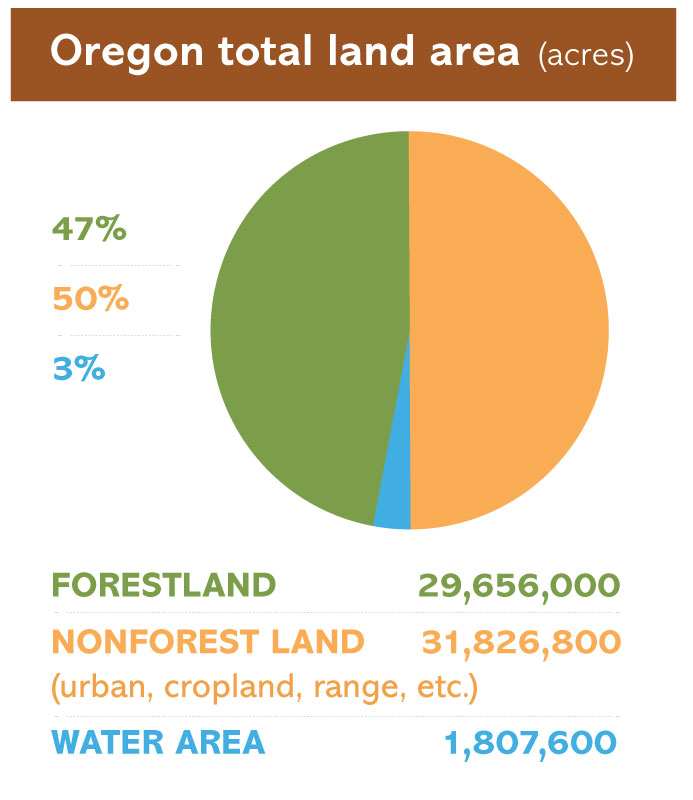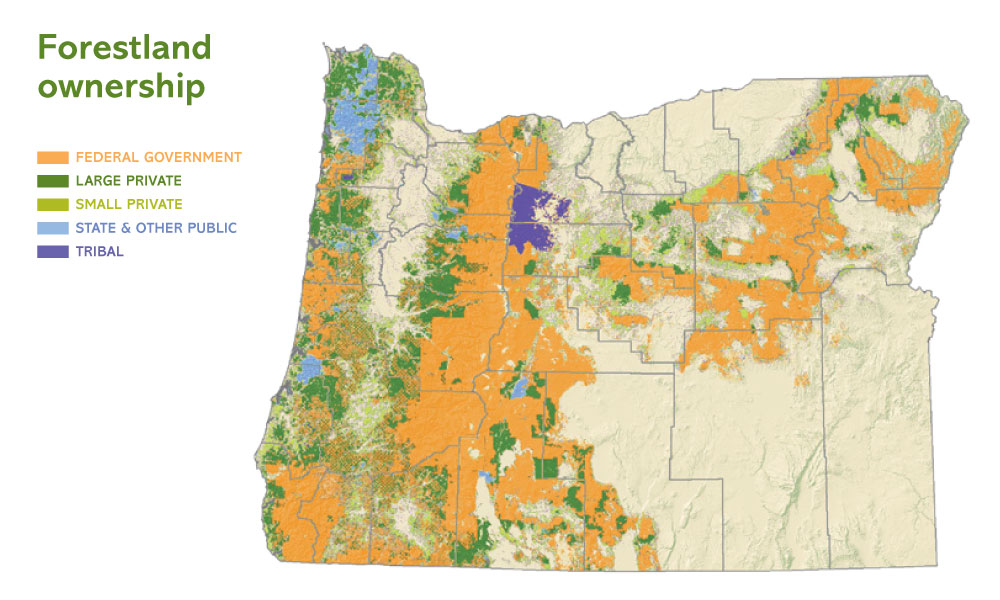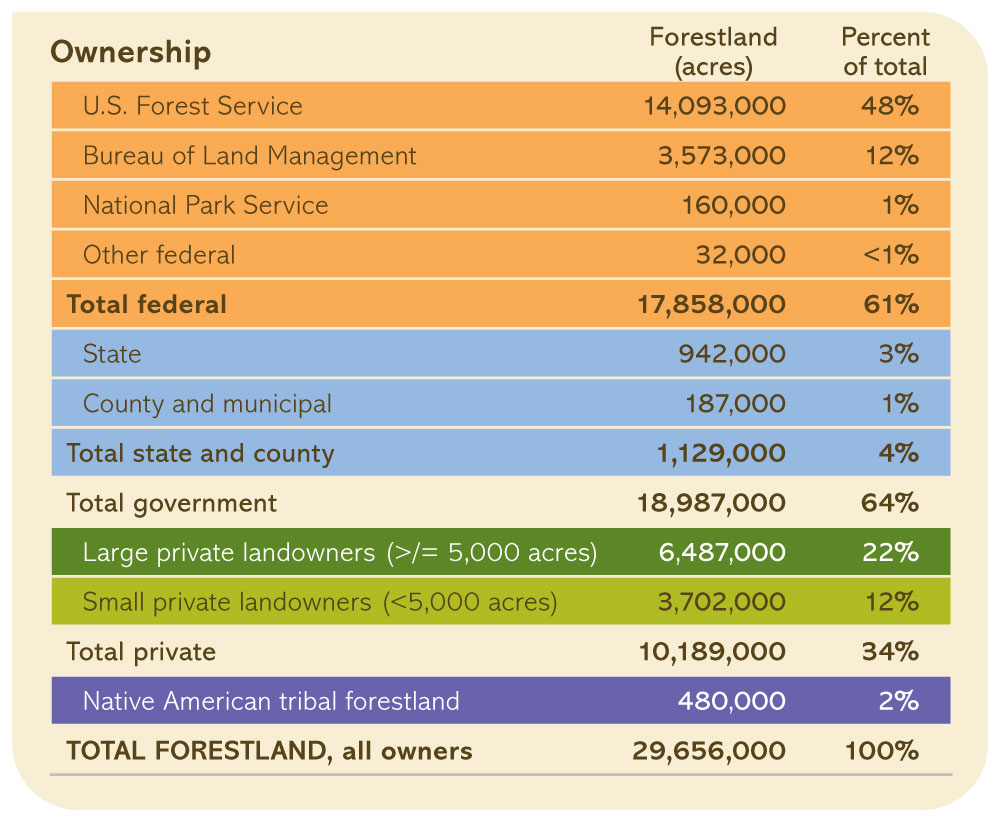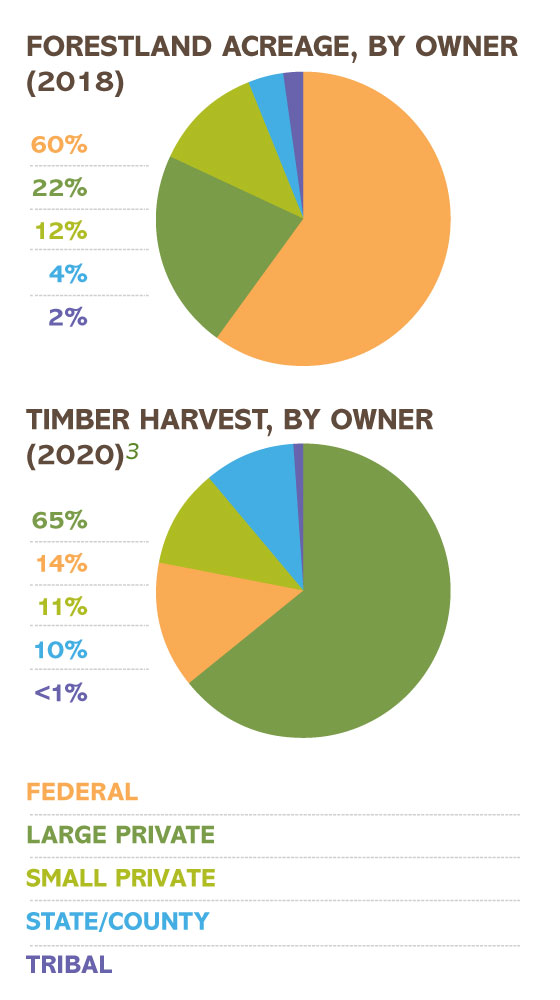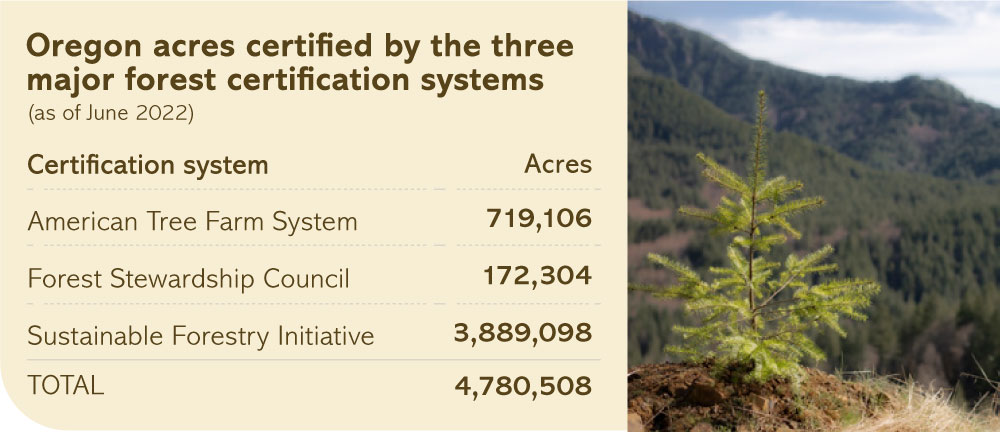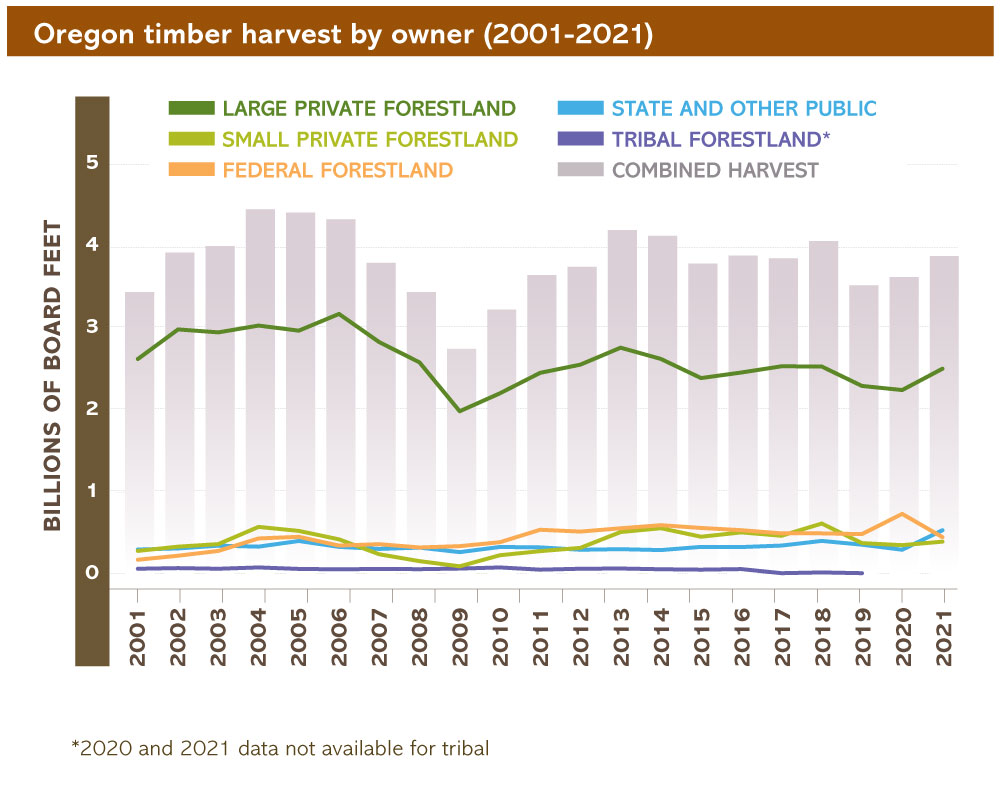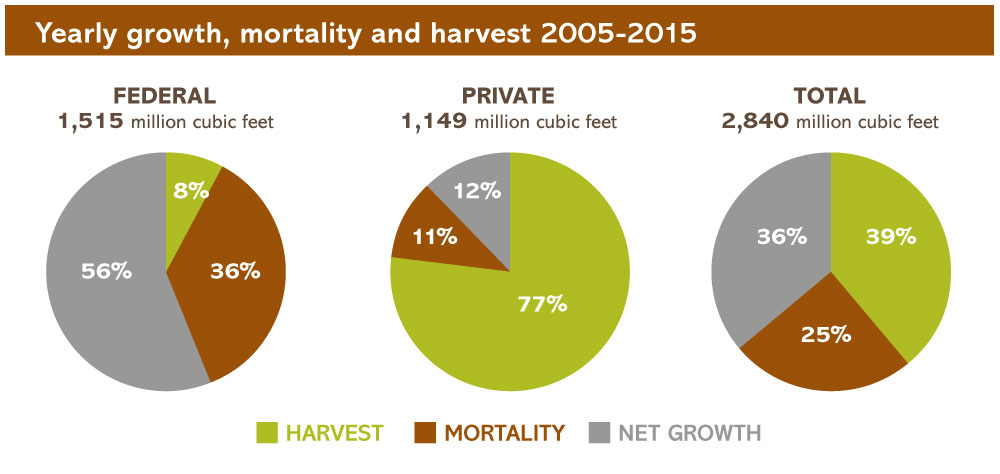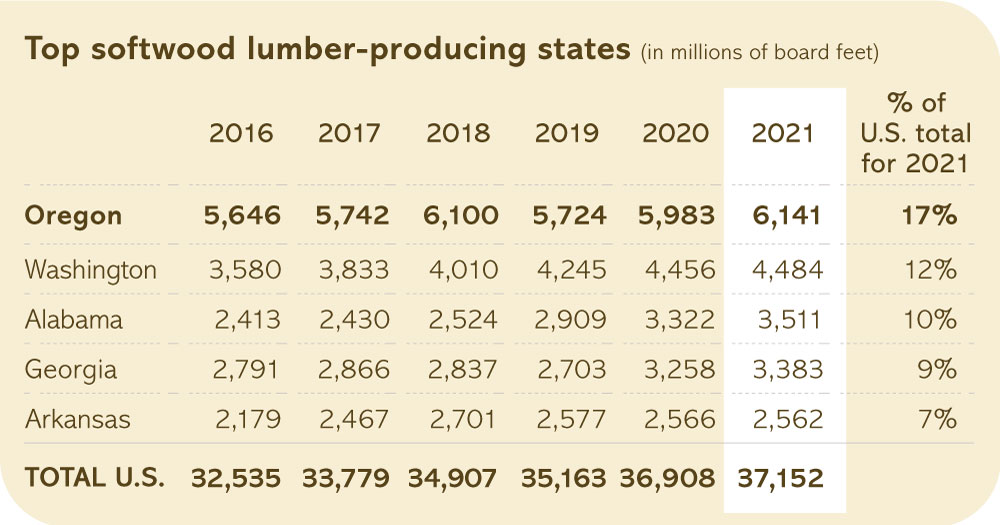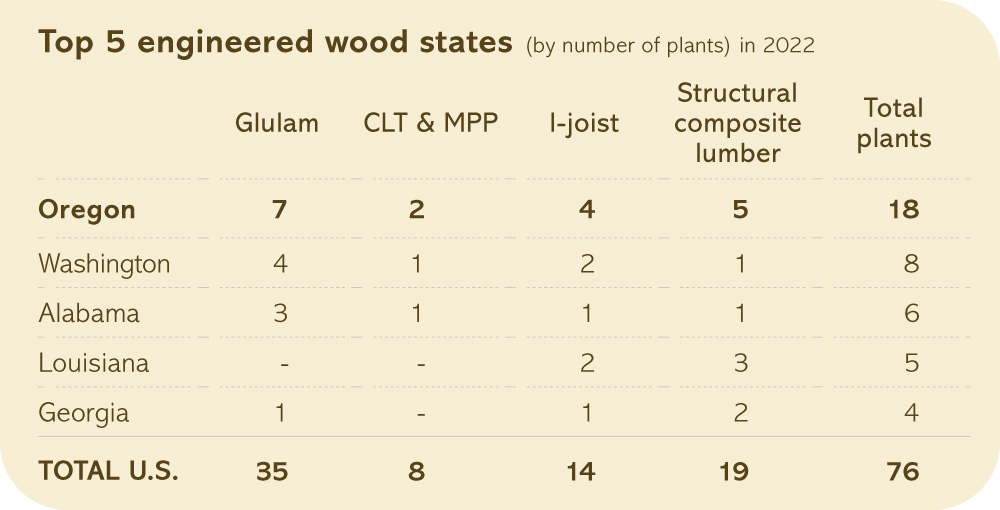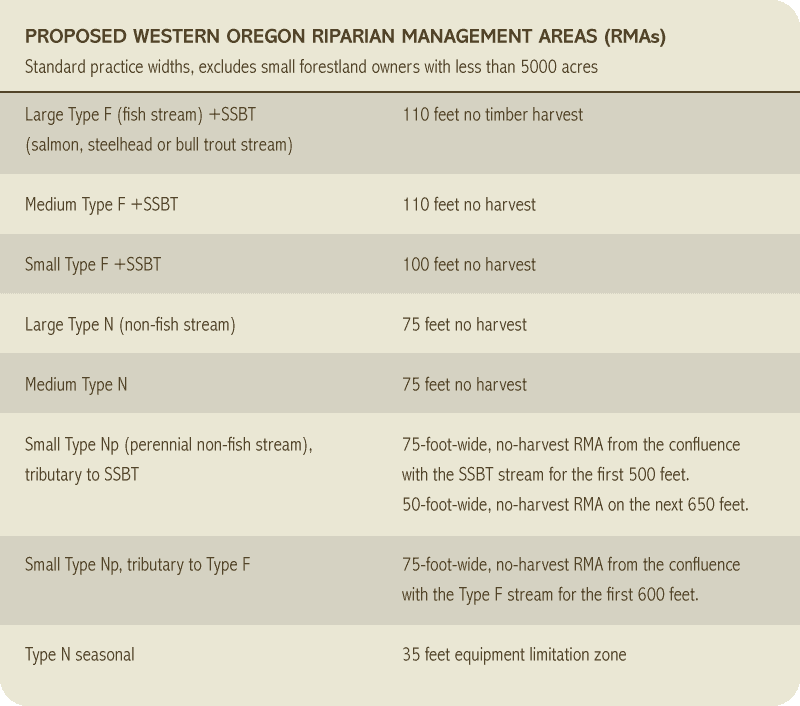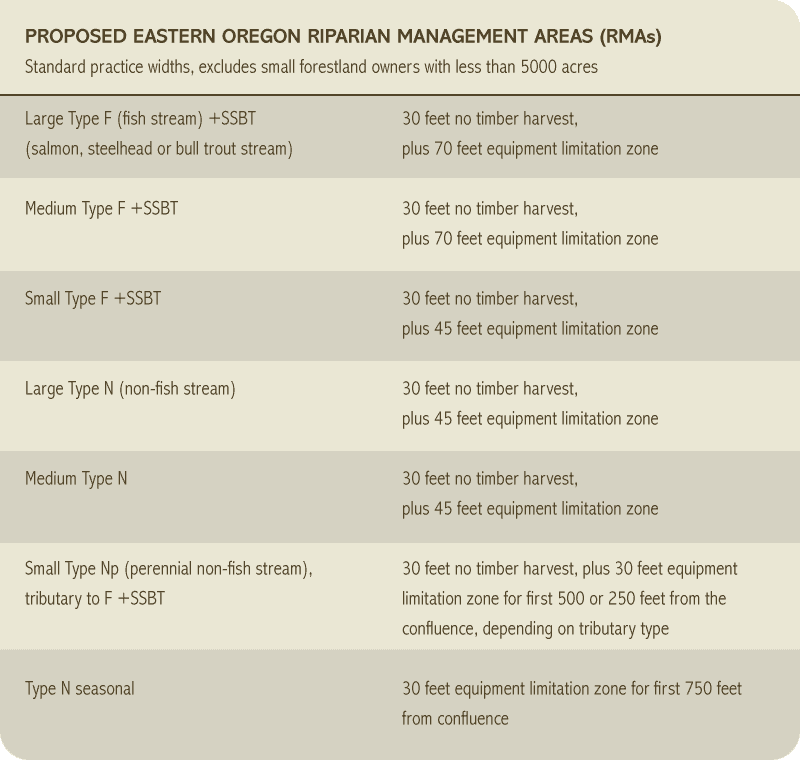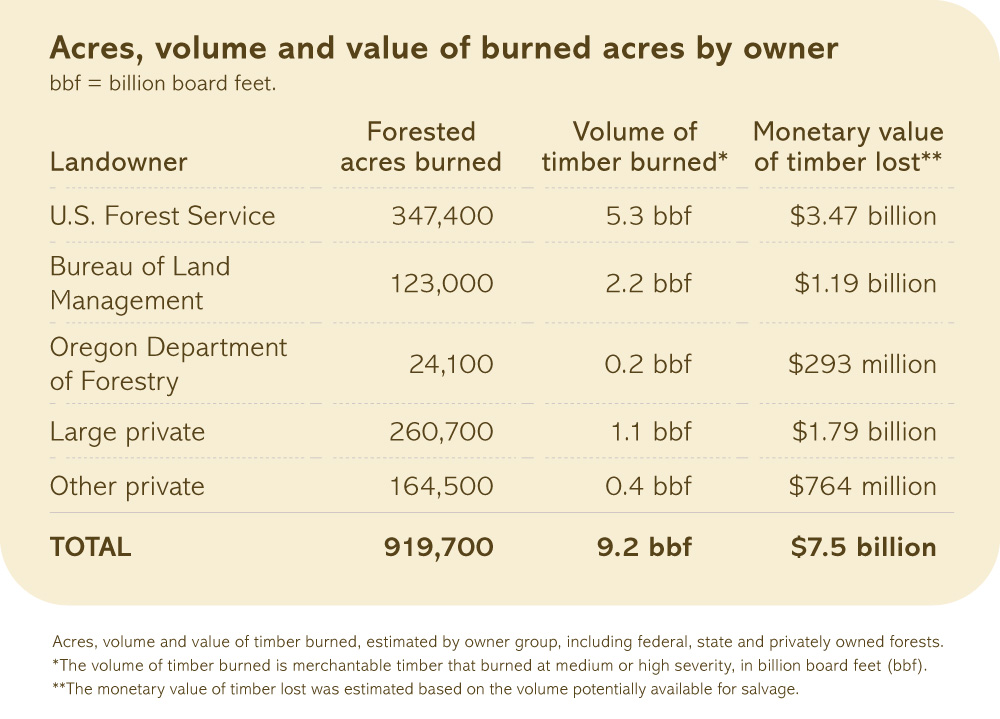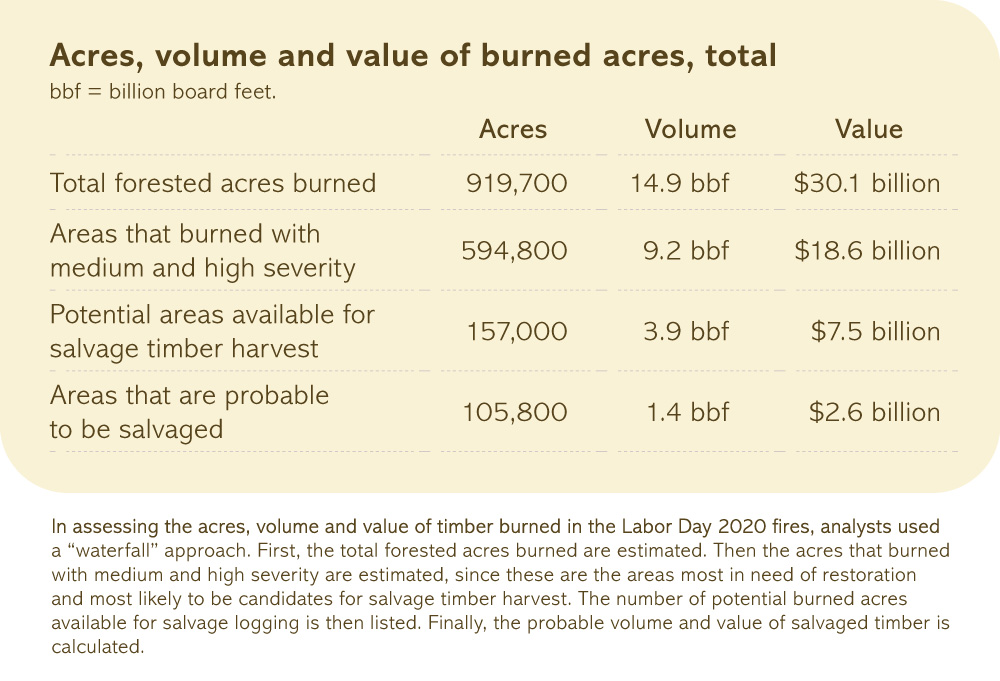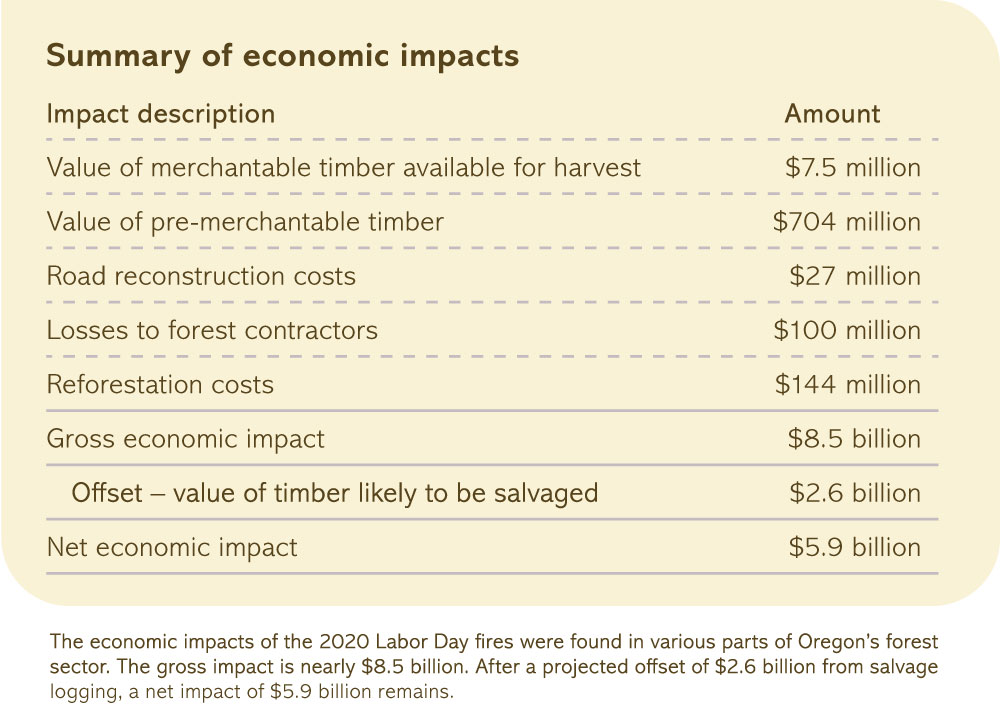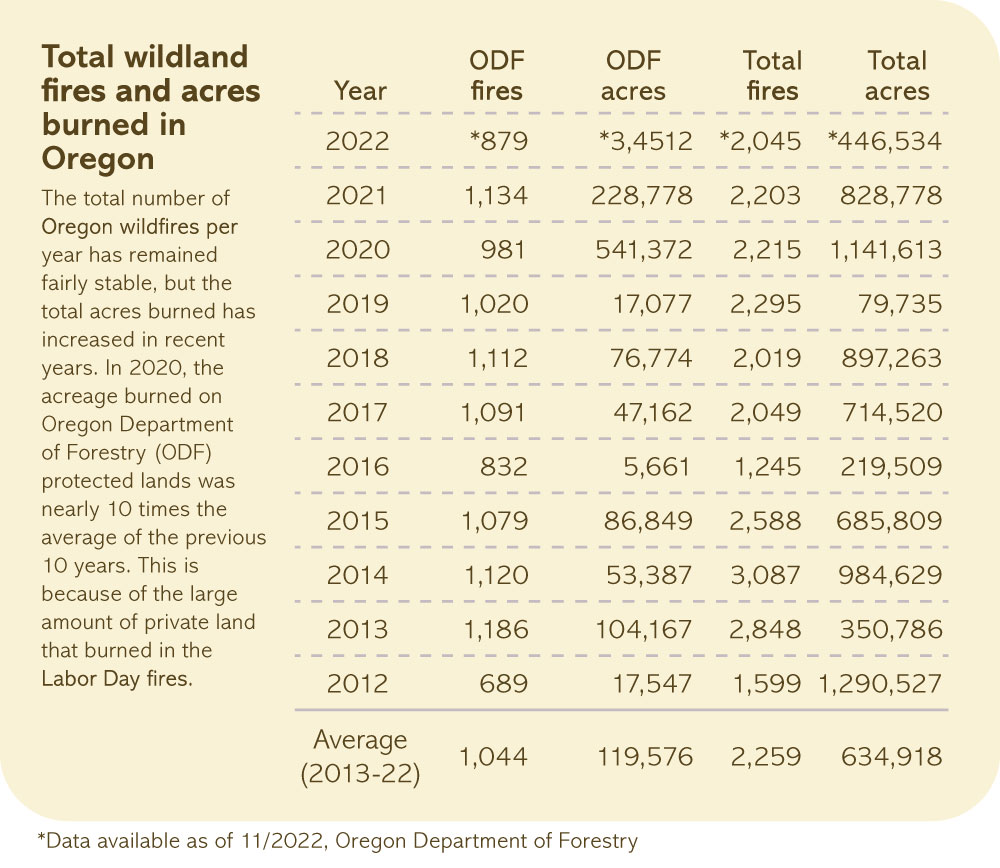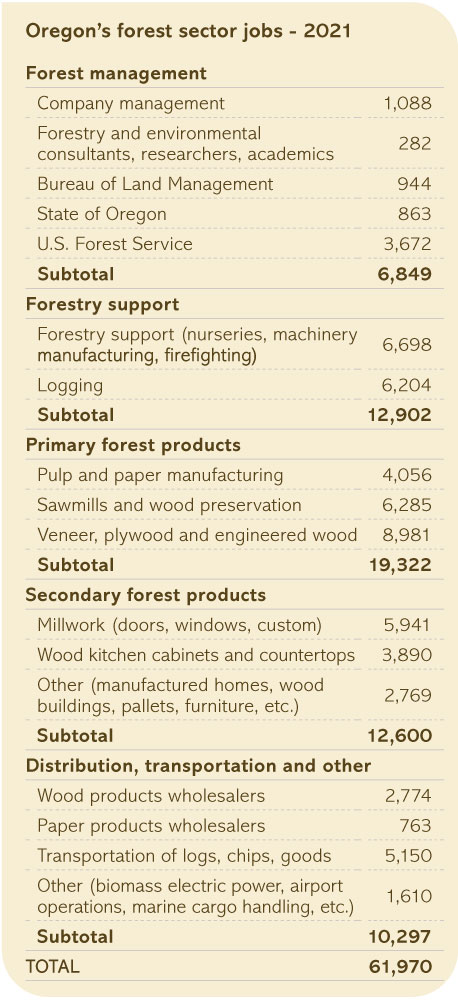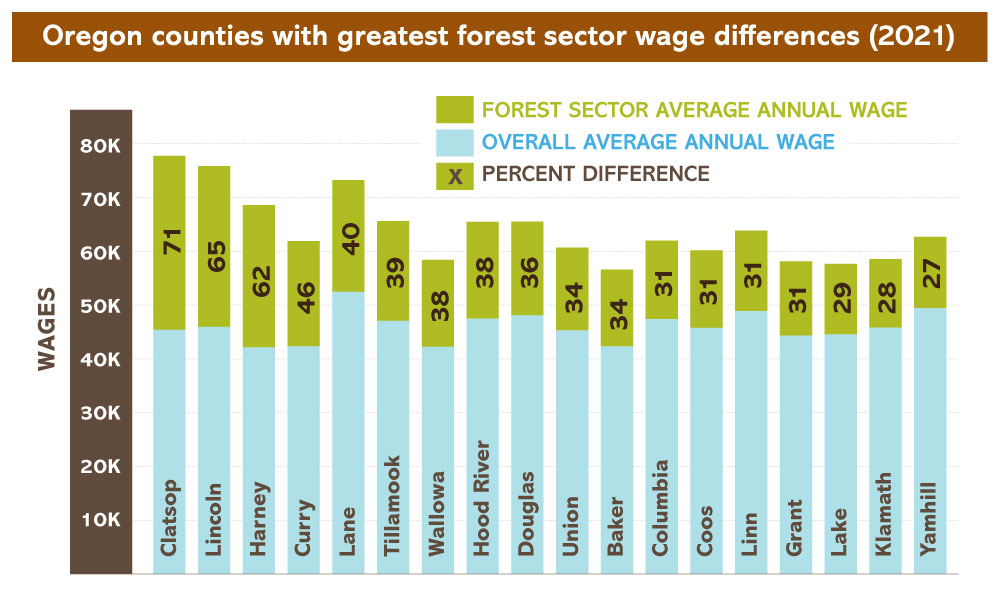FOREST SECTOR WORKFORCE
Oregon’s forest sector includes a wide variety of employment, from forestry, logging, millwork and cabinetmaking to engineering, hydrology, business management and academic research. Here’s a rundown of Oregon’s forest sector jobs in 2021, by type of employment.
CAREERS IN THE FOREST SECTOR
Tens of thousands of Oregonians are employed across a variety of forest-related jobs, from forestry, logging, millwork and cabinetmaking to engineering, hydrology, business management and academic research. These forest professionals help care for our forests, conserve fish and wildlife habitat, protect water, sustain forests for future generations, and make innovative forest products.
About 3% of Oregon jobs 8 are part of what is known as the “forest sector.” The sector encompasses a diverse array of career paths that include firefighters, ecologists, foresters, wildlife and fish biologists, and more. Forest sector jobs are present in each of Oregon’s 36 counties. In some rural counties, the sector is responsible for nearly a third of the economic base.
Like other industries, Oregon’s forest sector has been affected in recent years by a statewide labor shortage. The forest sector is looking at several opportunities to improve the forestry workforce, such as by providing forest operator training programs.
Forest-related employment in Oregon totaled 61,970 jobs in Oregon in 2021, according to the Oregon Employment Department. This is about 3% of the total jobs in Oregon. However, in five rural Oregon counties — Crook, Douglas, Grant, Jefferson and Lake — forest sector jobs accounted for more than 10% of the total.
The average annual wage of those jobs was $68,200, roughly 7% percent more than the average wage of $64,000 for all Oregon employment. In some Oregon counties, especially rural ones, forest sector jobs have significantly higher-than-average wages. Forest sector wages in Clatsop County, for instance, are 71% higher than the county average.
